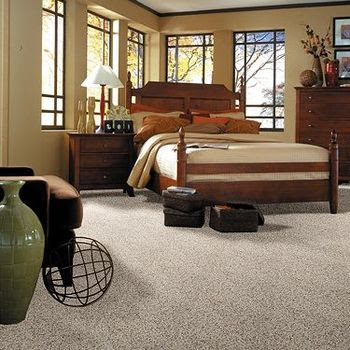For many homeowners, installing carpet seems like a daunting task. Even the most experienced DIYers cringe at the idea of carpet installation. While it's true that DIY carpet installation can be difficult, it's not impossible. With the right tools, preparation, and instruction, you can properly install carpet in nearly any room in your home.
(That being said, it's important to recognize that DIY carpet installation is a difficult process. If you don't have a lot of experience with DIY home improvement projects, or you don't have the time, interest, patience, or resources to finish the project, you should probably leave it to a professional. Contact Buyright Carpet today to discuss professional carpet installation options.)
1. Properly prepare the floor.
Floor preparation for carpet installation is usually pretty minimal. Still, there are some important steps you need to take to make sure your floors are ready for carpet. When replacing carpet, make sure to pry up all the old carpet from the floor and tackless strip. Be sure to sweep, mop, and dry the floor completely - installing carpet over a dirty or moist floor can lead to floor and carpet rot in the future. Lastly, when installing carpet over concrete, make sure you know where the heating ducts are. If you don't, you run the risk of puncturing them when nailing the carpet into the concrete.
2. Get the right tools.
Assembling the necessary tools to properly install carpet is one of the hardest parts of the project. The following is a list of the equipment you'll need to properly (and safely!) install your new carpet:
- Tackless strip
- Saw/shears
- Hammer
- Masonry nails
- Carpet padding
- Heavy scissors
- Utility knife
- Duct tape
- Staple gun
- Chalk
- Row cutter
- Seaming tape
- Rolling pin
- Seaming iron
- Power stretcher
- Knee kicker
- Trimmer
- Stair tool
- Gripper edge
- Carpet!
Read all instructions carefully before using any of these instruments. If you don't feel comfortable using specific tools, contact Buyright Carpet and discuss professional installation.
3. Cut the carpet correctly.
There's nothing more frustrating than realizing you've incorrectly cut the carpet you're about to install. Not only is it a waste of time, it is a waste of money, too, and an expensive one at that. Always get exact measurements of the room before cutting, and remember to leave about 2 inches of excess carpet on each wall side. This allows for a bit of error and is easily trimmed later.
4. Stretch, stretch, stretch!
It's important when exercising, and it's important when installing new carpet. Attach the carpet to one corner of the room and use the power stretcher to stretch the carpet to the opposite wall. Attach the carpet to the tackless strip and follow the same procedure for the other opposing corners. This part of the installation process can be confusing and frustrating, so again, if you are unfamiliar or uncomfortable performing this step, contact Buyright Carpet to discuss professional carpet installation options.
5. Smooth and grip.
After trimming the excess carpet at each wall, use a stair tool, push the edges of the carpet between the wall and tackless strip. once this is done, you can trim the carpet at the doorway and install a gripper edge to hold the carpet in place.
Simple, right? Well, not exactly. These are just general tips for installing carpet in your home. The actual process is much more complicated. Contact a professional at Buyright Carpet today if you have any questions about your DIY carpet installation project. We'd be glad to help!



